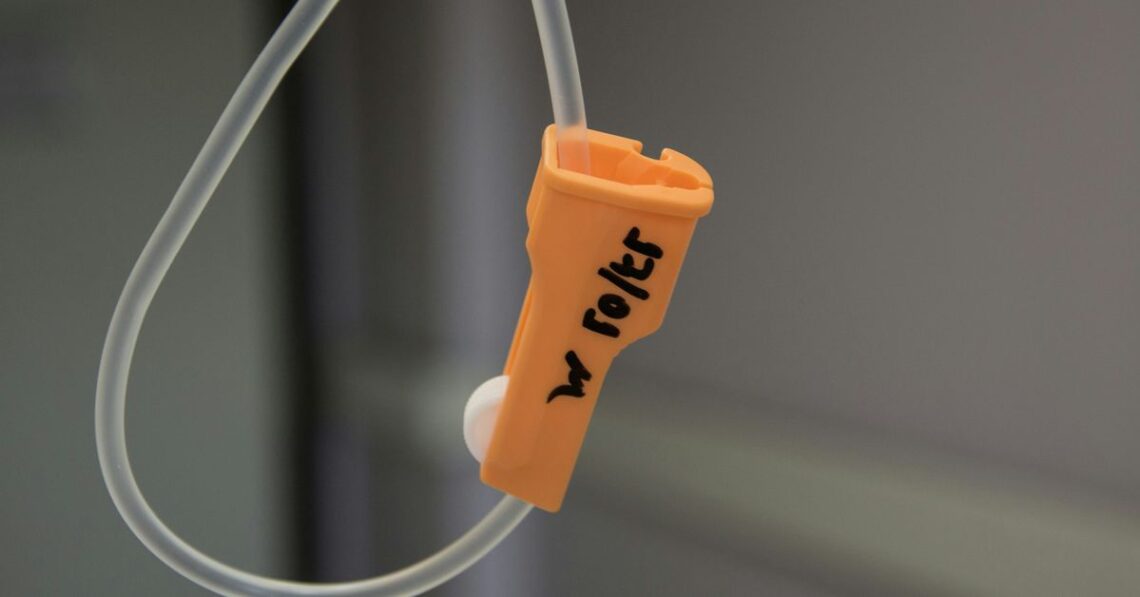The Surprising Truth About Vaccination Rates and Community Wellness
When was the last time you thought about vaccinations? For many, it’s a routine part of life, a tiny needle prick that usually comes with a lollipop or a sticker proclaiming “I’m vaccinated!” However, the implications of vaccination rates extend far beyond the realm of individual health. They ripple through communities, impacting everything from public health to local economies. In this article, we dive deep into the often surprising connections between vaccination rates and community wellness, unraveling a tapestry that showcases just how intertwined our health is with the choices we make about vaccines.
A Brief History of Vaccination
Before we delve into the current state of vaccinations, it’s worth taking a moment to appreciate the history of this incredible medical advancement. Vaccines have been around for centuries—yes, centuries! The first vaccine was developed by Edward Jenner in 1796, using cowpox to confer immunity against smallpox. Fast forward to today, and we have a plethora of vaccines, each designed to combat various diseases that can wreak havoc on our health systems.
Vaccination has been a game-changer. Smallpox, once a global scourge, was eradicated in 1980. Measles, mumps, and rubella—once common childhood diseases—are now largely preventable thanks to widespread vaccination efforts. Still, not all communities are on board with the vaccination train, and that’s where things get interesting.
The Current Landscape of Vaccination Rates
In recent years, vaccination rates have fluctuated across different demographics and regions. Some communities boast impressive coverage, while others lag significantly behind. For instance, the Centers for Disease Control and Prevention (CDC) reports that about 90% of children in the U.S. receive their first dose of the measles vaccine. However, some neighborhoods—particularly those with strong anti-vaccine sentiments—see rates plummet to alarming lows. I remember reading an article about a town where only 70% of children were vaccinated, leading to a measles outbreak. This is a prime example of how one community’s choice can lead to dire consequences for all.
Factors influencing vaccination rates are numerous and complex. They can include:
- Access to Healthcare: In many underserved areas, access to vaccinations can be limited. This is a clear barrier that needs addressing.
- Education and Awareness: Misinformation can spread like wildfire. The internet, while a valuable resource, can also be a breeding ground for myths and misconceptions.
- Cultural Beliefs: In some communities, cultural or religious beliefs may discourage vaccination, leading to lower rates.
- Political Climate: Policies and political rhetoric can significantly impact vaccination rates. After all, who could forget the heated debates surrounding vaccine mandates?
Community Wellness: What Does It Mean?
So, what exactly do we mean when we talk about “community wellness”? It’s not merely an abstract concept; rather, it encompasses the overall health of a community, including physical, mental, and social well-being. It’s about more than just the absence of disease. A healthy community is one where individuals can thrive, supported by strong healthcare systems, accessible resources, and a culture of well-being.
Interestingly, vaccination rates play a crucial role in determining community wellness. When vaccination rates are high, herd immunity is achieved, protecting those who cannot be vaccinated—like infants or individuals with certain medical conditions. This creates a safety net that allows communities to flourish. Conversely, low vaccination rates can lead to outbreaks of preventable diseases, creating a public health crisis that affects everyone.
The Link Between Vaccination Rates and Community Health
It may seem straightforward, but the connection between vaccination rates and community health is often underestimated. Let’s break it down:
1. Herd Immunity
Herd immunity is a phenomenon that occurs when a significant portion of a population becomes immune to a disease, making its spread unlikely. The threshold for herd immunity varies by disease. For instance, measles requires about 95% of the population to be vaccinated to prevent outbreaks. Lower vaccination rates can lead to a chain reaction of health crises, as seen in various outbreaks over the past few years.
2. Economic Implications
Believe it or not, low vaccination rates can have a direct impact on local economies. When outbreaks occur, healthcare costs surge. Hospitals become overwhelmed, and resources are stretched thin. Local businesses can suffer as people avoid public spaces to steer clear of illness. I recall a local restaurant owner telling me how an influenza outbreak in their town resulted in a serious drop in customers, as people chose to stay home rather than risk exposure. It’s a cycle that can devastate communities.
3. Mental Health Considerations
Public health crises can lead to anxiety and stress for community members. The fear of outbreaks can take a toll on mental health, particularly for vulnerable populations. I think back to the frantic days of the pandemic when uncertainty loomed large. Anxiety levels skyrocketed, and for parents, worry over their children’s health became a constant companion. When communities achieve high vaccination rates, they not only reduce physical health risks but also contribute to a collective sense of security.
Real-World Examples
Let’s take a moment to explore some real-world examples that illustrate the connection between vaccination rates and community wellness. I mean, what’s better than a good story to drive the point home?
The Case of California
In 2015, California faced a significant measles outbreak, primarily linked to low vaccination rates in certain communities. The outbreak sparked a public outcry and led to legislative changes aimed at tightening vaccination requirements for schoolchildren. Following these changes, the state saw a marked increase in vaccination rates. This isn’t just a happy coincidence; it’s a clear demonstration of how policy can affect health outcomes. With higher vaccination rates, California has been able to reduce the risk of future outbreaks, thereby improving overall community wellness.
A Look at Vermont
On the flip side, let’s look at Vermont, a state known for its high vaccination rates. With a strong culture of health and wellness, Vermont consistently ranks among the top states for vaccination coverage. As a result, the state has experienced fewer outbreaks of vaccine-preventable diseases. The community benefits from not only better health outcomes but also a stronger sense of collective responsibility. It’s like a feel-good movie where everyone wins (cue the uplifting music).
Barriers to Vaccination
Despite the clear benefits, barriers to vaccination persist. It’s important to understand these obstacles to create effective solutions. Here are a few major barriers:
Access to Services
In many areas, access to healthcare can be a significant barrier to vaccination. Those living in rural or underserved urban areas may struggle to find healthcare providers who offer vaccinations. Transportation issues can also complicate matters. I remember a friend who lived in a remote area and had to drive over an hour to get her child vaccinated. For some families, the logistical hurdles can seem insurmountable.
Misinformation and Fear
The internet, while a treasure trove of information, can also be a double-edged sword. Misinformation can spread quickly, leading to fear and hesitancy around vaccinations. Social media platforms have been criticized for allowing anti-vaccine rhetoric to flourish, drowning out factual information. It’s disheartening to see how easily fear can cloud judgment. I’ve spoken to parents who genuinely believe they’re protecting their children by avoiding vaccines, despite overwhelming evidence to the contrary.
Economic Factors
Economic barriers can also play a role. Families struggling to make ends meet might prioritize other expenses over healthcare. The cost of vaccines can become an obstacle, even when they are often provided for free or at low cost through public health programs. It’s a tragedy that financial constraints can dictate health outcomes, leaving vulnerable populations at a disadvantage.
Strategies for Improvement
So, what can be done to improve vaccination rates and, in turn, community wellness? Fortunately, there are several strategies that can help:
Education and Outreach
Education is the cornerstone of vaccination advocacy. Communities need access to accurate information about vaccines, their benefits, and the risks of preventable diseases. Outreach programs that engage with parents and provide clear, factual information can help dispel myths and encourage vaccination. I once attended a community health fair where nurses and doctors were on hand to answer questions and provide information. The positive energy was palpable, and I could see how those personal connections made a difference.
Policy Changes
Legislative measures can also drive improvements in vaccination rates. States can implement policies that require vaccinations for school entry, as seen in California. Additionally, funding for community health initiatives can help bolster access to vaccinations in underserved areas. It’s a win-win situation when policies align with public health goals.
Community Engagement
Engaging with community leaders and organizations can create a grassroots movement toward higher vaccination rates. When local voices advocate for health, it resonates more deeply with residents. Think of it as a neighborhood potluck where everyone brings a dish to share—community engagement can be a recipe for success.
The Role of Healthcare Providers
Healthcare providers play a pivotal role in promoting vaccinations. It’s not just about giving a shot; it’s about building trust and rapport with patients. Providers should take the time to address concerns, provide resources, and encourage vaccination as a vital component of health. I’ve seen firsthand how a compassionate conversation can change a parent’s mind about vaccines.
Conclusion: A Call to Action
The relationship between vaccination rates and community wellness is clear: higher vaccination rates lead to healthier, more resilient communities. It’s a truth that can’t be overlooked, especially as we navigate the complexities of public health in our modern world. Each of us has a role to play in championing vaccination efforts, whether it’s through education, advocacy, or simply sharing our own positive experiences with vaccines.
As we continue to grapple with evolving health challenges, let’s remember that our choices matter. Vaccination isn’t just an individual decision; it’s a community responsibility. Together, we can create a healthier future for all.
So, the next time you hear someone question the importance of vaccinations, you can confidently share the surprising truth: they’re not just a personal choice—they’re a cornerstone of community wellness.






